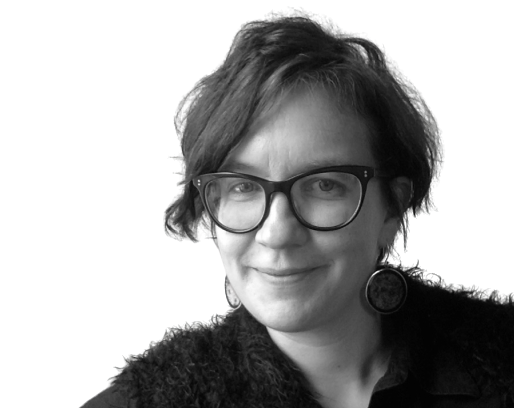- EN
- RU
Tasting ethnic politics along roadsides
Street, Food and Belonging along Urban Roadsides in Aksu
(Xinjiang, China)
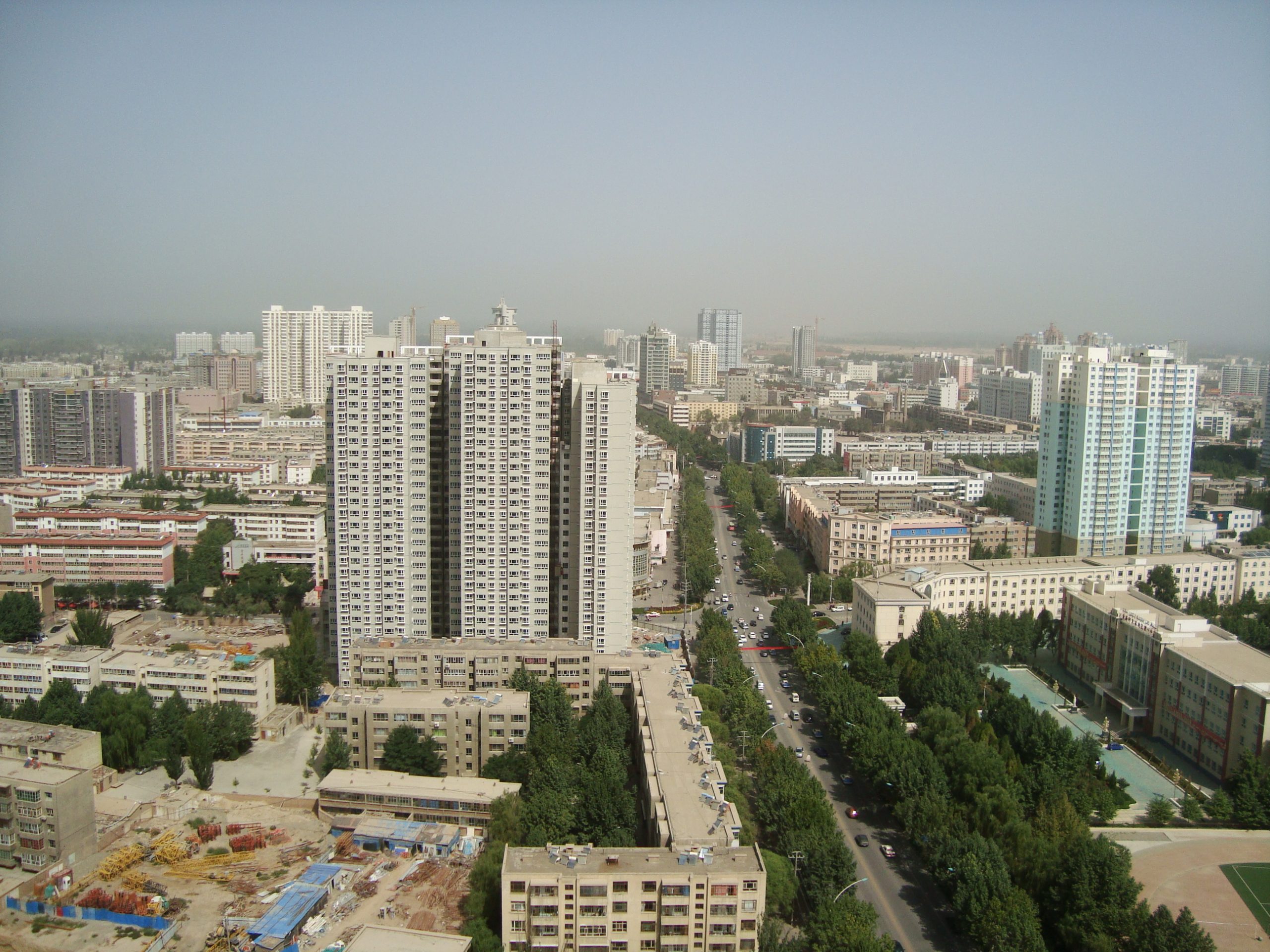
1. Prelude
When I remember Aksu, I’m thinking about the visual impressions, the smells and sounds, the feeling of walking along the streets. As a passionate urban fieldworker, I enjoy sensing a city from its roadsides, including the taste of food. Strolling through Aksu leaves the visitor with a dazzling series of impressions: some streetscapes resemble eastern Chinese cities with their offers of Beijing Duck, Lanzhou noodles or Sichuan hotpot. In other places, we encounter an Uyghur presence in the form of lamb skewer stalls, naan bread stands and supermarkets selling Turkish products.
In 2011 and 2012, I had many lighthearted encounters with local residents in and around food spots. This project revives some of the moments I spent with Turakiz, a Uyghur woman the same age as me who had grown up in the city.
By moving the cursor on the map, you can hear various stories about food in Aksu. The soundscapes in the background underline the different worlds that come into contact with one another along urban roads. All the stories are based on real encounters from back then.
However, my memories are fading. They have become blurred in recent years by the shocking news of Uyghur people disappearing into Chinese state-controlled detention centers. A bitter taste transforms the colorful memories into dream-like black-and-white film stills.
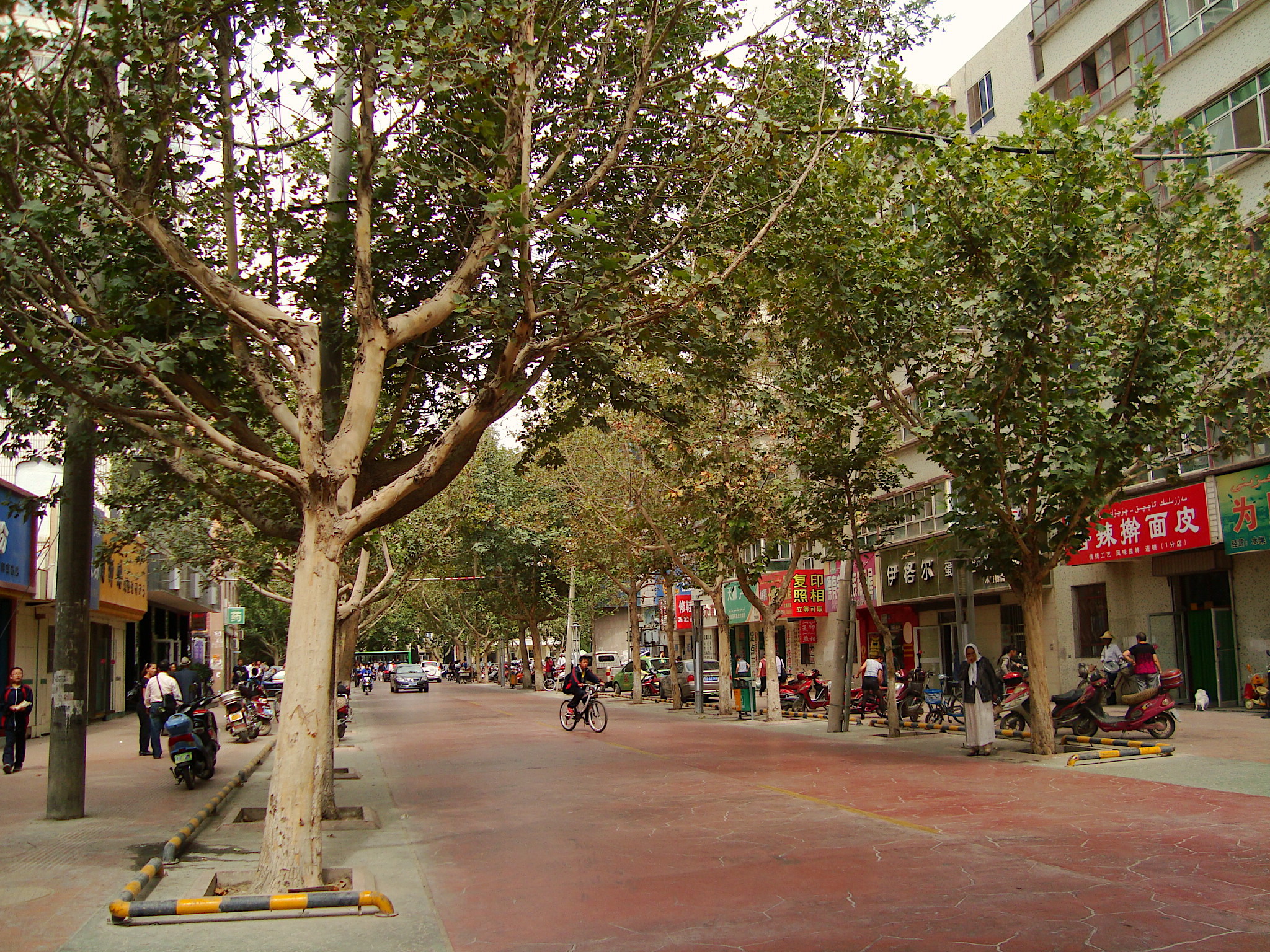
2. A Shaokao Restaurant
Without the company of Turakiz, I am free to go to any restaurant, be it Chinese or Central Asian, halal or not, expensive or cheap. One night, I enter a cozy-looking barbecue place. It has recently opened in Xiao Nanjie, a tree-lined street with many restaurants offering cuisine from all over China. Each of the four tables has its own barbeque grill where customers can prepare the food themselves. From a large refrigerator, one can choose prepared skewers with all kinds of vegetables, meat and fish. The flavors here remind me of my years as an exchange student in Beijing.
The owners are a Han couple in their twenties. The woman tells me that she is originally from the neighboring province of Gansu. She immigrated to Aksu 12 years ago because it is easier to make money here. Her two siblings have migrated to eastern China, to Beijing and Shanghai, but she decided to try her luck in western China. Her husband was born and raised in Aksu. They saw this sort of barbecue bar on a trip to Chengdu and got inspired. Later, they bought the table grills in Beijing and opened this place. Their food is not halal, so only Han Chinese (and foreigners) frequent the restaurant.
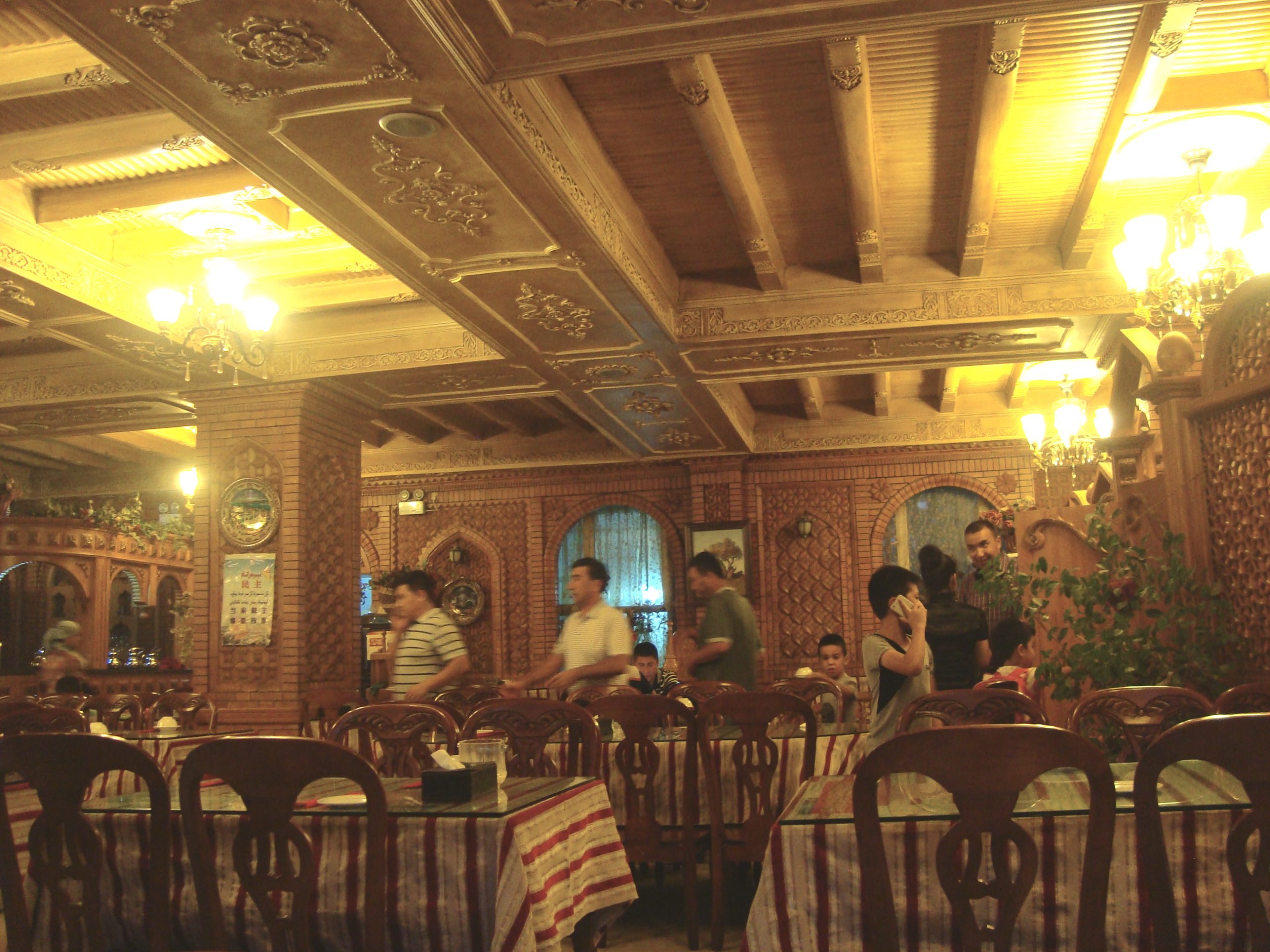
3. Bahadir
One day, Turakiz invites me to join her at a Bahadir restaurant, a quiet oasis in this unspectacular desert town. It is located on the first floor of an ordinary apartment building close to the Uyghur-dominated Hongqiao district. In Bahadir, Uyghur culture is being celebrated through antique-looking objects, wood-carved interiors, and paintings of traditional houses and desert scenes on the walls. The restaurant was set up by a Uyghur businessman trained in western cooking. Besides Uyghur dishes like laghman or polo, one can also order coffee and pizza. Many well-to-do Uyghurs from Aksu come here, families, friends, gaggles of women, young and elderly people. One can also spot the odd Han Chinese customer. But you would not find roadworkers or cleaning ladies here, because the dishes are quite expensive.
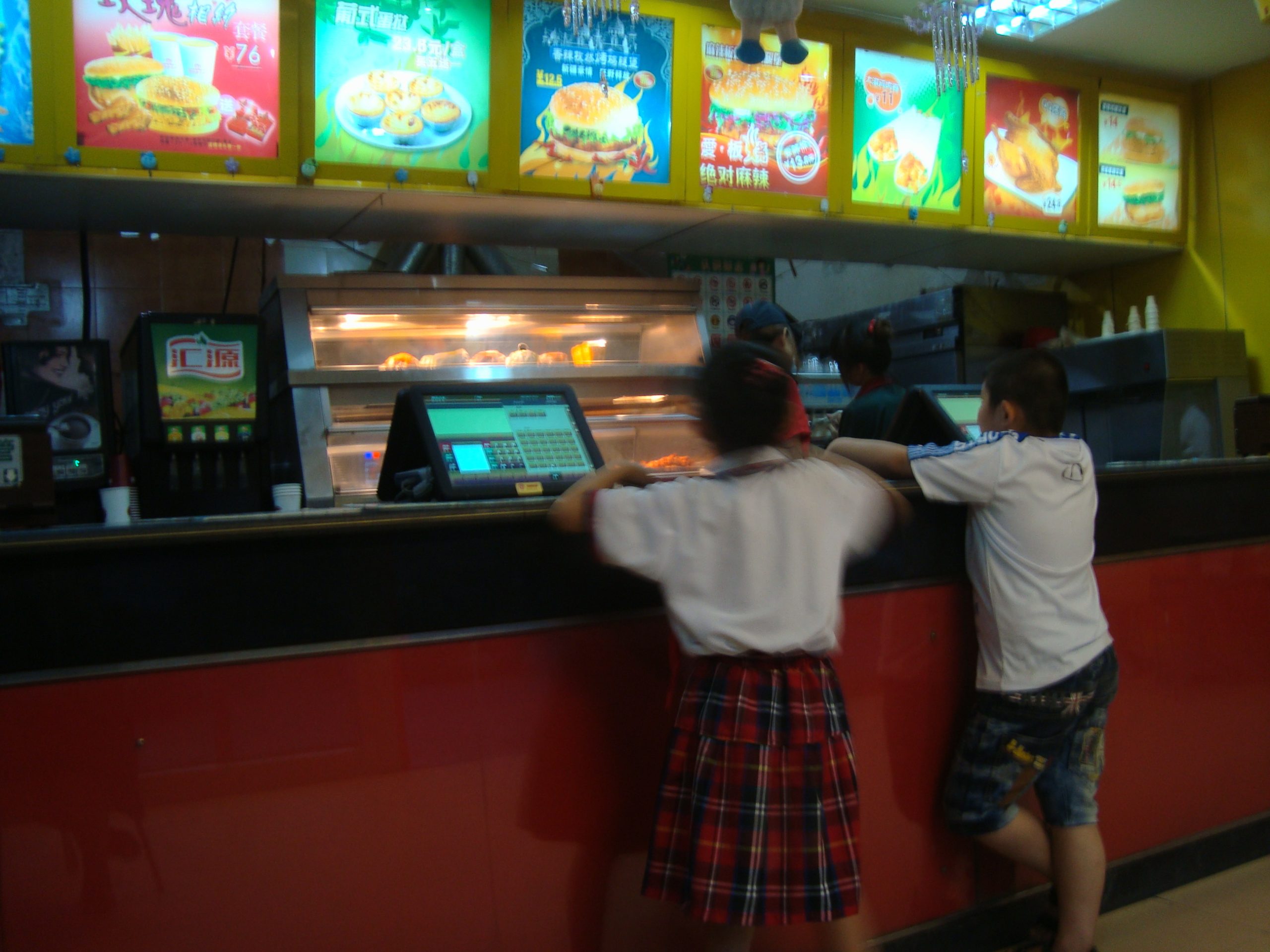
4. Best Food Burger
On a hot summer evening, Turakiz, her elder sister and me are having ice cream and soft drinks in Best Food Burger, an imitation of big fast food chains such as McDonald’s, Dicos or Burger King. The interior in the two-story restaurant is dominated by bright yellow and red colors with plastic tables and chairs. At a self-service desk, you can buy your food and take it on a serving tray to your seat.
Our main discussion today revolves around the stay of Turakiz in the provincial capital Ürümqi, where she is currently studying for half a year. Her elder sister advises her that she shouldn’t go out too much, that she shouldn’t risk breaking up with her husband, that she should behave like a modest Uyghur woman. Turakiz defends herself vehemently. She feels under attack and argues that she just wants to have fun without giving up anything. She says that her sister can’t understand her as she is from a different generation. People her own age would see things differently.
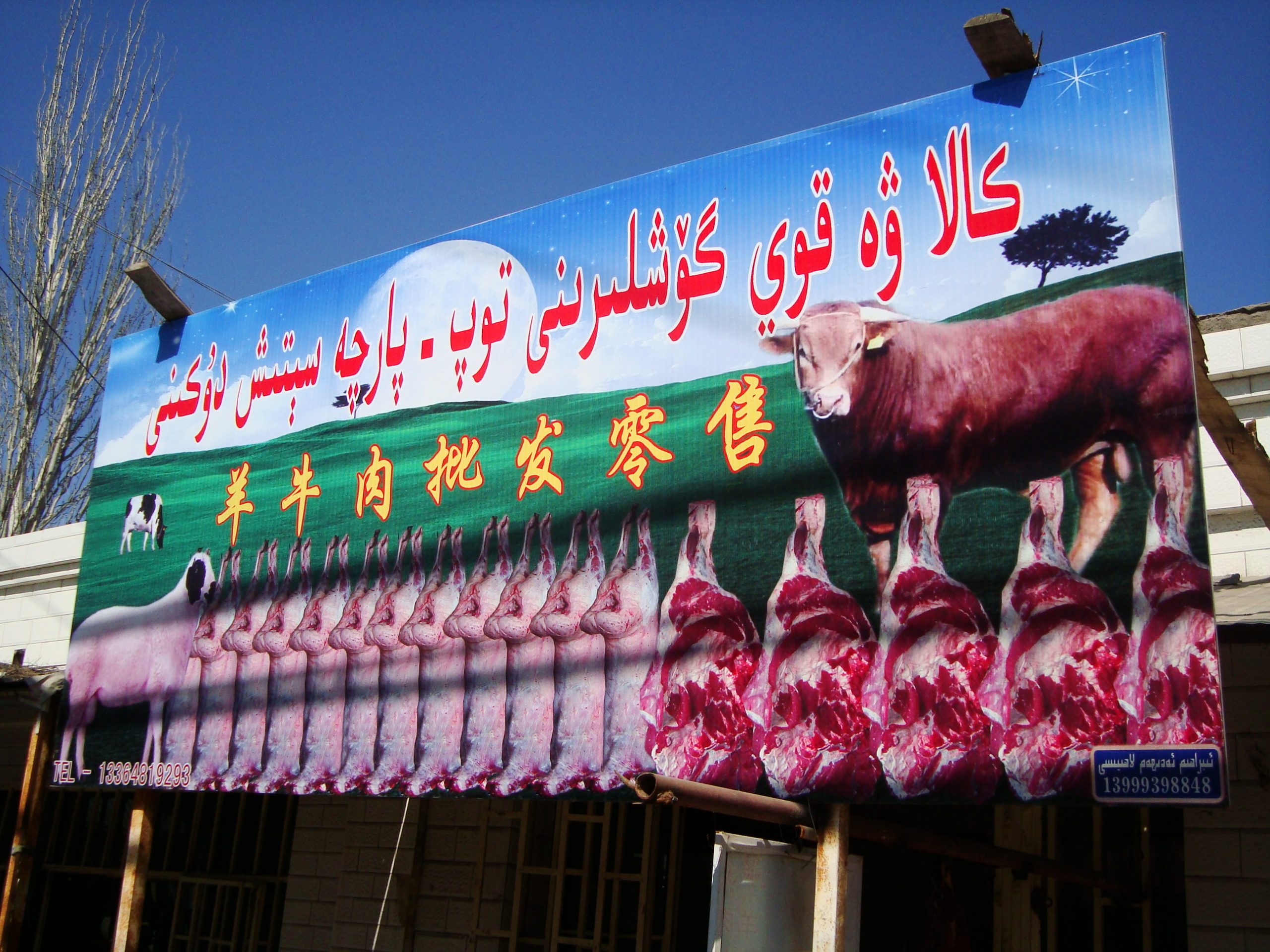
5. Lamb Meat
Food plays an important role in the daily performance of Uyghurness in public and private spaces. For instance, Han people eat pork and Uyghurs do not. Due to their Muslim religion, Uyghurs prefer lamb or beef. In one conversation, Turakiz stated that Uyghurs are proud of being careful about what they eat. They like to differentiate themselves from the Han, who, in her words, “eat all kinds of meat”. Buying lamb skewers or naan bread is a matter of personal taste – but at the same time an expression of ethnic belonging.
Lamb is the main dish on Muslim holidays. Turakiz tells me that on Kurban Jie, the Muslim holiday of the Feast of Sacrifice, they usually gather in her mother’s house and the lamb has to be slaughtered by a male member of the family. If a family has no men who can do the slaughtering, they have to mandate a butcher to do it.
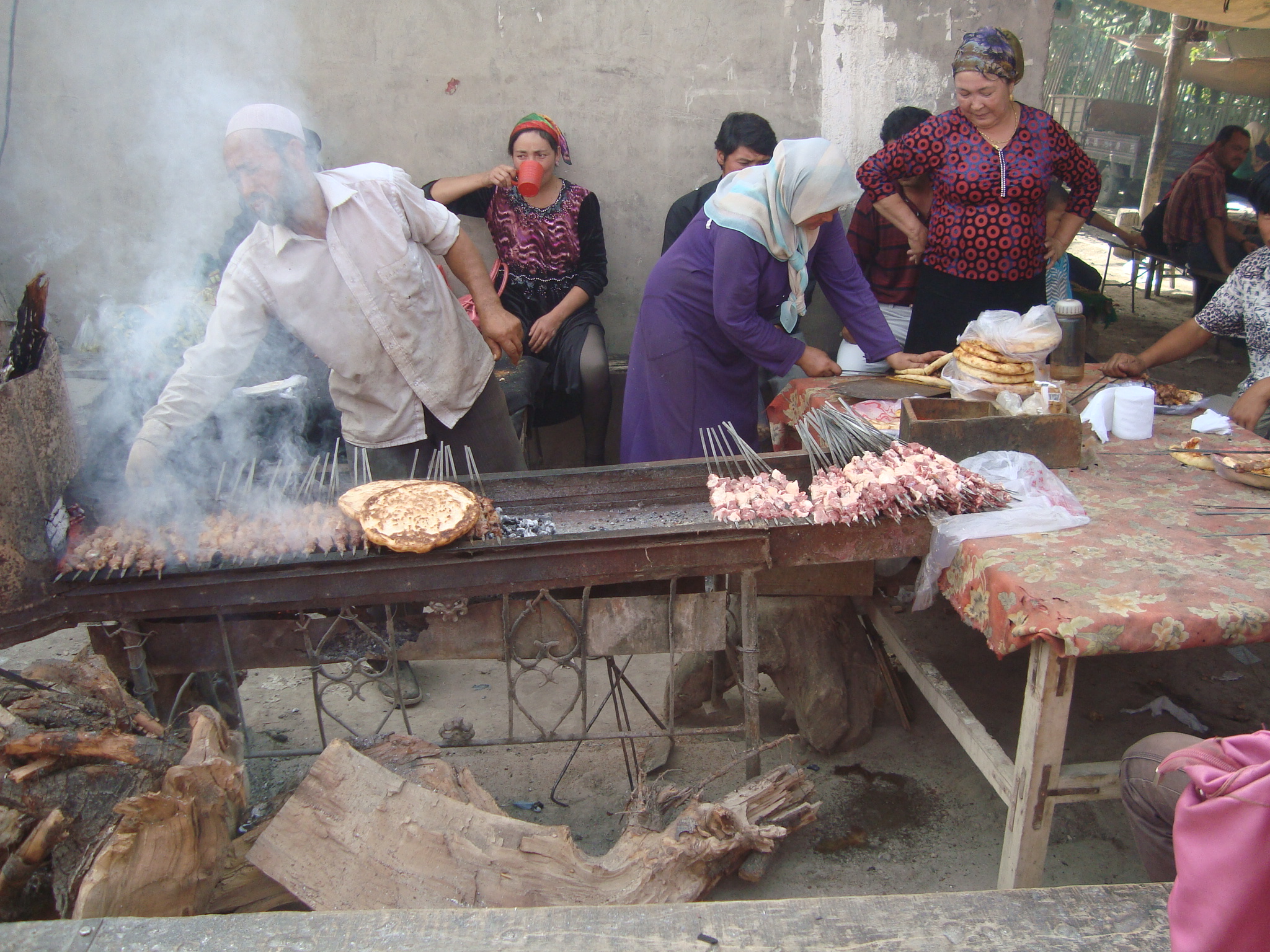
6. Han Residents’ Meat Choices
On a taxi ride through Aksu, the Han driver comments that of all the meats, he prefers lamb and beef. “Too much pork is unhealthy”, he adds. While he has accustomed his meat-eating habits to the local Uyghurs, he cannot understand why people would buy the Uyghur naan bread. He won’t eat it, as he thinks it is very unhygienic. According to him, during the preparation, hair and sweat pollutes the bread. On the other hand, like many Han Chinese, he praises the lamb skewers sold at street stands as a delicious specialty of the region.
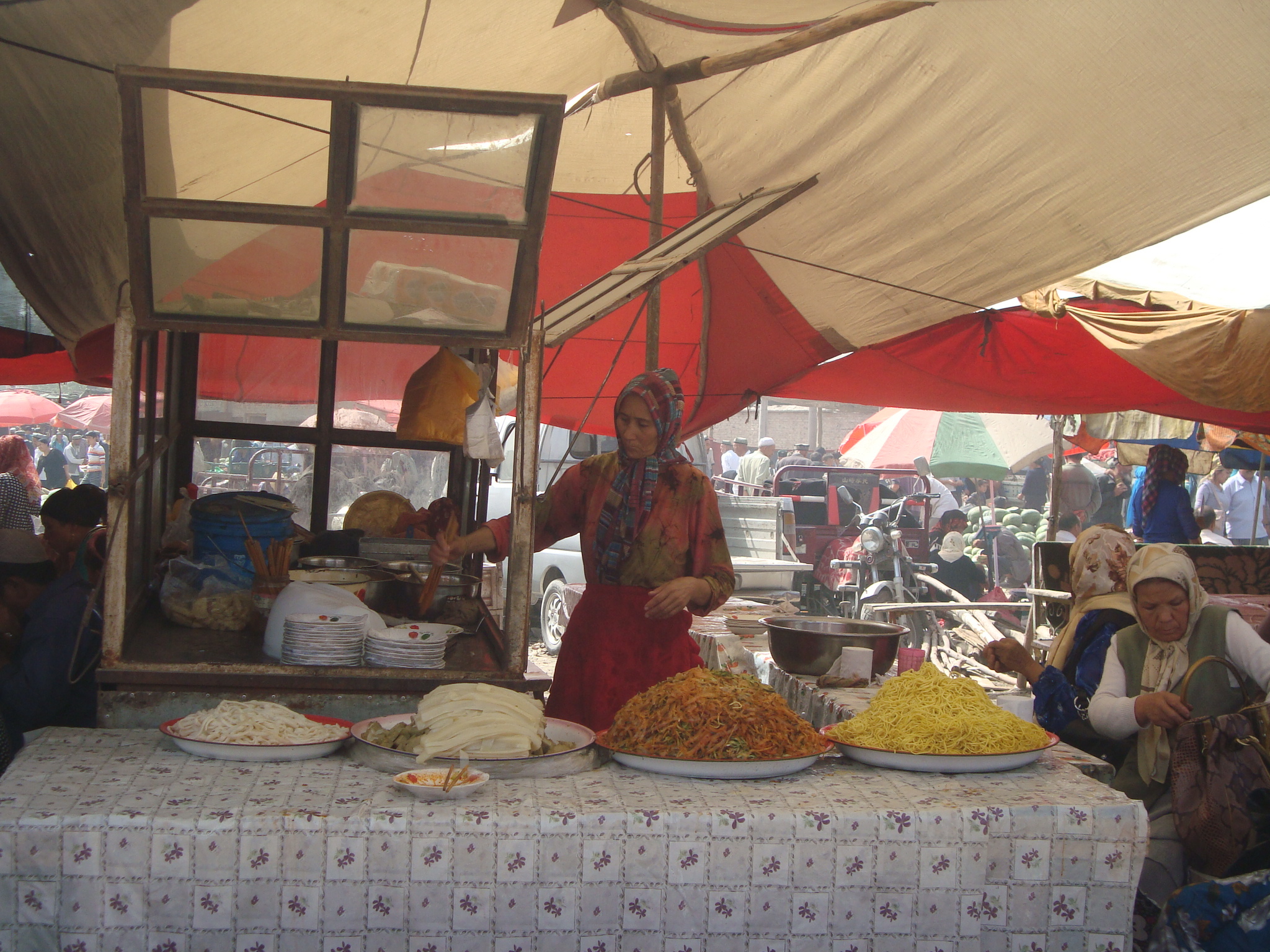
7. Sunday Bazaar in Yigarqi
This Sunday bazaar is located in the area west of Duolang River where a lot of construction work is going on to build a new city center. Residential compounds are mushrooming all over the place. The Uyghur bazaar is located at the roadside of a new four-laned asphalt street. Turakiz, who joins me at the market, mentions that it is mainly people from suburban or rural areas who are coming here, as the market is known for its budget prices. They come to buy clothes and other items for daily life. Most women walking around wear a headscarf, while many men sport the traditional Uyghur hat. The market seems generally to be a place for poor people. And the largest crowd gathers around the food stands where one can grab freshly roasted lamb skewers, watermelons, Uyghur noodles (lampung), ice cream, dumplings filled with lamb and other local specialties.
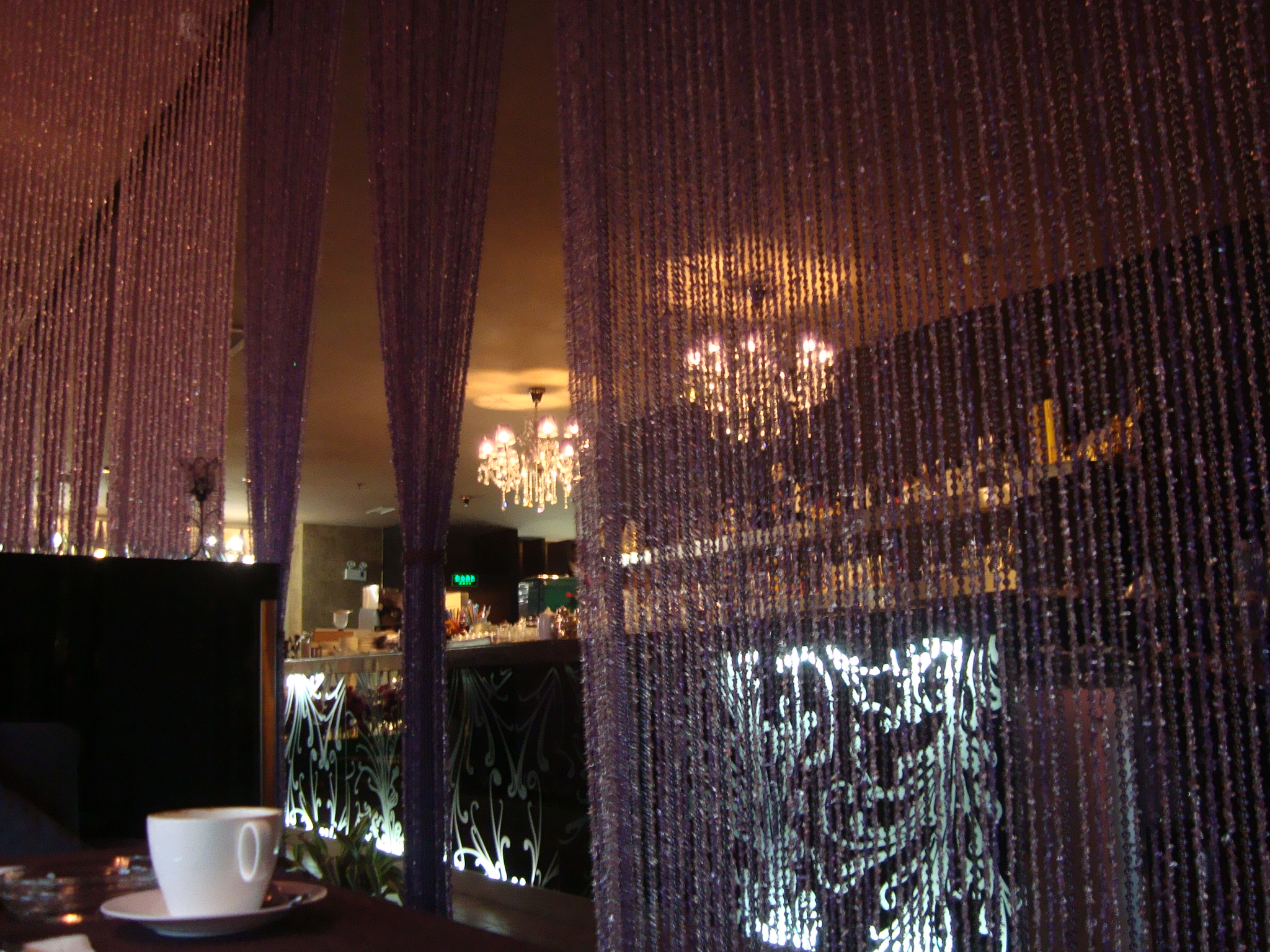
8. Colette Coffeehouse
On a lazy Sunday afternoon, Turakiz takes me out to Colette coffee at the southern end of Century Square. From the main door of the multistorey building on busy East Street, one of the main streets in Aksu’s city center, you have to climb some stairs to reach the entrance of the coffeehouse. Turakiz fancies a bit of the Western lifestyle and associates with it having coffee and a cake. The style and decoration of the restaurant is kind of international. Chandeliers provide light, English music comes out of the loudspeakers and cozy sofa-style seating invites customers to chill. Prices are rather in the upper range and you can get everything from matcha coffee to Italian pizza and chicken with rice. All halal. Both Han and Uyghur residents come to such non-ethnic restaurants, where ethnicity plays a minor role.
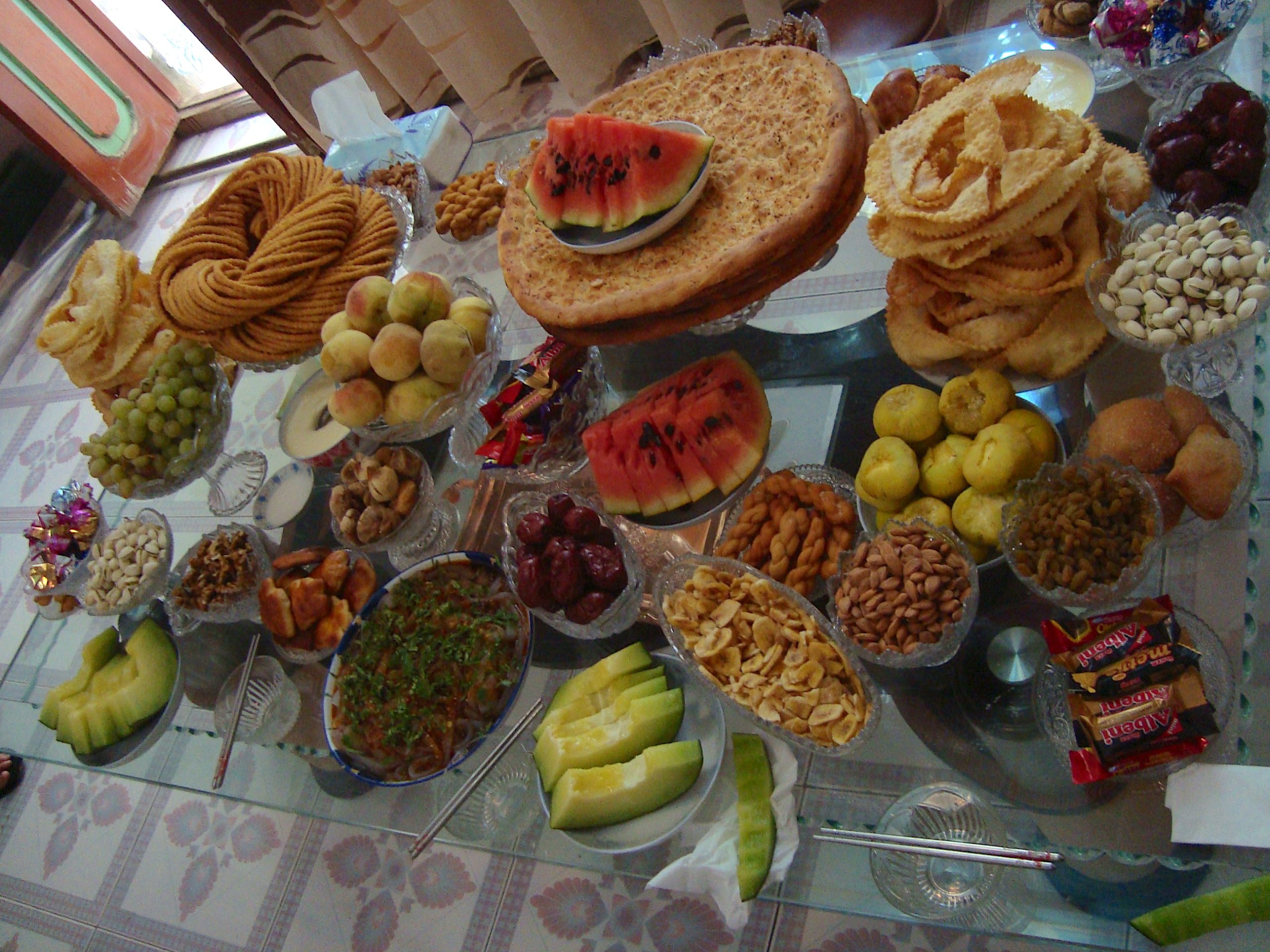
9. Epilogue
My collection of food memories from Aksu has now become testimony of a specific time in Xinjiang when multi-ethnic coexistence in urban public spaces was only partially burdened by state politics. Since 2012, ethnic discrimination has culminated in a highly unequal surveillance system. This mainly targets Uyghur residents under the pretext of combating terrorism. One million or more Uyghurs have been unjustly detained in internment camps since then. I really hope that Turakiz and my other acquaintances from that time have been spared from state violence and that, one day, we can again enjoy together the taste of laghman, polo, tschütschur and lampung.
Tasting ethnic politics along roadsides
When I remember the city of Aksu (Southern Xinjiang, China), I’m thinking about the visual impressions, the smells and sounds, the feeling of walking along the streets. As a passionate urban fieldworker, I enjoy sensing a city from its roadsides, including the smells and tastes of food. The project you just experienced is my memory of the time spent in Aksu during my anthropological fieldwork in the early 2010s. Back then, I mapped Uyghur and Han residences, shops and restaurants to get an understanding of the use of ethnic urban space and to trace the city’s social transformations. Years later, this material helps bring back the colorful memories of this place, which are now overshadowed by recent political developments in the region.
Madlen Kobi
